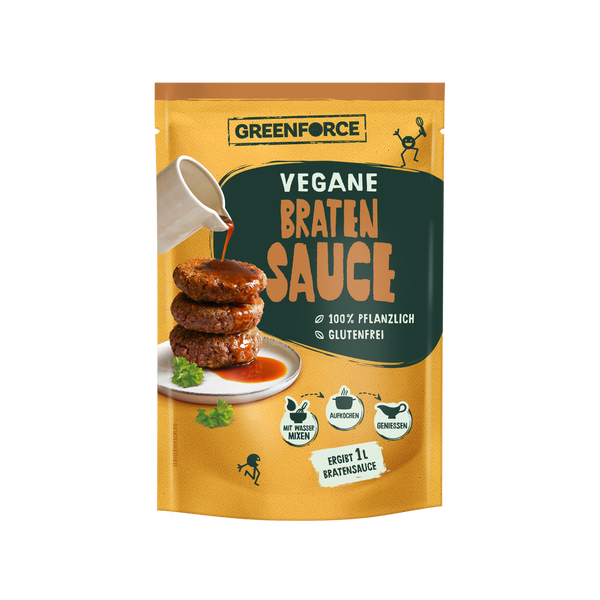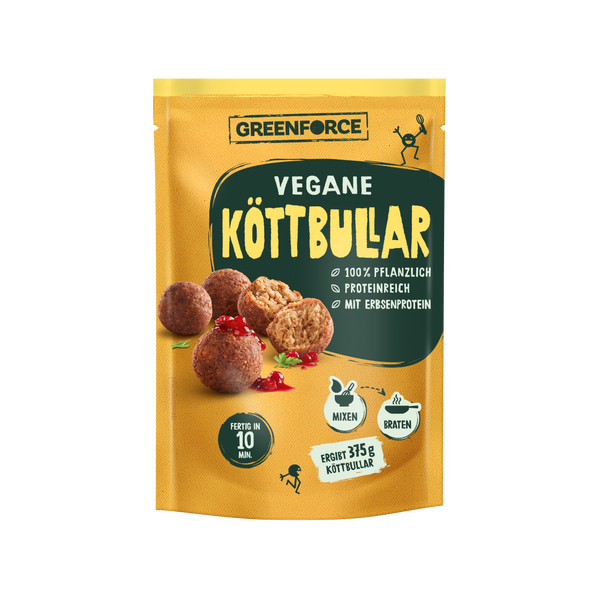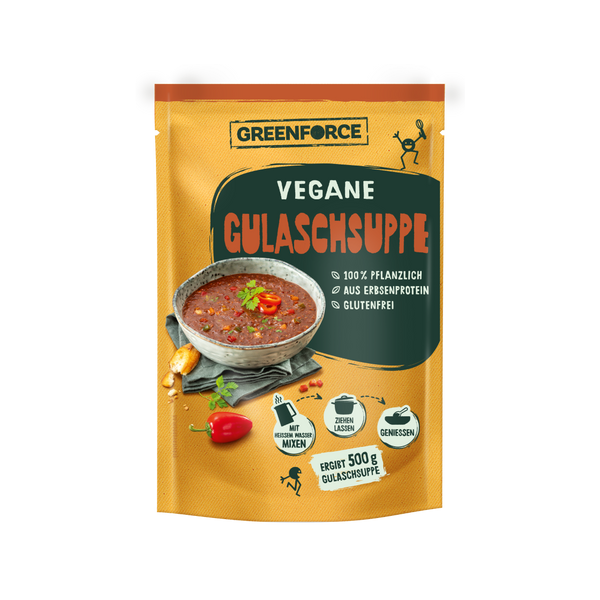Histamine headaches: Better quality of life through a change in diet
Theresa Aicher
03/11/23
Reading time: 8 minutes
A few thinly sliced slices of Parma ham, a good glass of red wine and a delicious cheese with a high degree of ripeness - culinary delicacies of this kind mean pure enjoyment for many people.
But while most people feel joy at this moment, others feel a throbbing pain in their head. That invisible party crasher: histamine .
If you're the type of person who gets a headache after such a treat, then histamine could be the culprit . A likely reason for this is histamine intolerance.
What exactly is histamine intolerance?
The messenger histamine is produced by the human body itself, but you can also absorb it through many foods. As a tissue hormone, it takes on several tasks in the human body. The hormone or messenger substance occurs in many different types of tissue.
The occurrence is particularly high in the diencephalon, in the intestines and in the stomach as well as in the lungs. The active ingredient works by expanding the blood vessels and thereby increasing the local blood supply. Like the tissue hormone bradykinin , histamines are also said to be involved in several inflammatory processes.
The active ingredient is also very important for the brain and the processes that take place there. For example, it acts as an important neurotransmitter and control element for the sleep-wake rhythm .
The messenger and active ingredient is usually broken down with the help of intestinal enzymes. If this degradation is disrupted in the long term, intolerances occur. In this case, doctors speak of histamine intolerance .
What are the causes of histamine intolerance?
Two enzymes regulate the breakdown of histamine. These are the proteins diamine oxidase (DAO) and N-methyltransferase . DAO is formed primarily in the intestinal mucosa, while N-methyltransferase is formed in the liver.
But if you now suffer from inadequate liver or intestinal function, your body does not produce enough histamine-degrading enzymes (proteins).
This also happens if you are lacking important micronutrients . As a result, the regulation of your body's own histamine no longer works as required. Both cases represent the actual causes of histamine intolerance.
If you consume more histamine through your diet despite the histamine not being broken down properly, you will experience headaches , gastrointestinal problems and other symptoms.
Example of chocolate: headache as a classic symptom
Do you often suffer from headaches after eating chocolate or other products containing cocoa?
This can be a coincidence, but is often due to histamine intolerance. Chocolate has a comparatively high histamine content.
If the body's own histamine does not break down properly, you will consume an additional amount of histamine with the delicious chocolate.
This leads to an increased level of histamine in your body. And that in turn leads to headaches or other typical symptoms.
The active ingredient can cause many health problems
The problem is that any release of histamine can lead to unpleasant reactions in the body. The possible effects are diverse. Everything is possible, from classic headaches to acute heart problems.
These health problems are particularly often associated with the effects of histamines :
- allergic reaction; especially in the form of redness or allergy-related formation of blisters and hives (hives)
- stabbing headaches and even migraines; This can be triggered by the vasodilating effect of the messenger substance
- asthma-like symptoms; possibly triggered by the narrowing of the bronchial tubes caused by histamines
- increased production of stomach acid (nausea, vomiting)
- general gastrointestinal problems (stomach pain, flatulence, diarrhea)
- swollen eyelids
- stuffy or runny nose
- various forms of cardiovascular problems, such as changes in blood pressure, rapid heartbeat or cardiac arrhythmias
In general , medications, alcohol and caffeine, as well as existing allergies and inflammation, can increase the body's release of histamine.
Various foods also contain comparatively large amounts of histamines and are therefore also considered to trigger intolerance reactions in sensitive people.
Food as the most common trigger
Foods such as ripe cheese, red wine or chocolate contain large amounts of histamines . The consumption of such foods is often accompanied by intolerance reactions in people with histamine intolerance. The danger lurks almost everywhere.
Almost all foods contain histamine in at least a low concentration. Foods that go through long fermentation or maturation processes are considered to be particularly contaminated. This is the case, for example, with cheese, fish, sauerkraut or wine.
Depending on the variety and type of storage, the respective amounts of histamine can vary greatly. A typical example of this is the different maturation methods for wines.
In practice, wines matured in wooden barrels often have higher histamine levels than wines that were stored in stainless steel tanks as part of the maturation process. Sometimes it happens that the same type of cheese has completely different histamine levels .
Headaches etc.: Histamine-rich foods are classic triggers
The foods listed below generally have a very high histamine content and are considered possible triggers for headaches and other symptoms (Source: Kiel University Skin Clinic, Swiss Histamine Intolerance Interest Group; short: SIGHI):
- Cheeses that have matured for a particularly long time, such as Emmental, mountain cheese, Edam, Appenzeller, Parmesan or Gouda
- Herbal cream cheese, processed cheese and mold cheese
- especially red wine, but also champagne, wheat beer and other alcoholic drinks
- Lemonade, fruit tea and green tea
- all foods containing cocoa; especially chocolate
- Chips and similar snacks
- Fruit yoghurt or quark, ready-made muesli and wheat germ
- Nuts; Walnuts, peanuts, cashews and almonds are particularly rich in histamine
- Eggs in every shape
- margarine
- Tofu, canned corn and mixed pickles
- Tomatoes (also tomato juice, ketchup)
- Spinach, mushrooms, onions, eggplant, avocado, olives and peppers
- Sauerkraut, garlic, legumes, artichokes or even rhubarb

- Raw ham, raw sausages and, for example, salami
- preserved, seasoned or smoked meat
- Leberkäse, meat salad and other forms of heavily minced meat
- offal and game meat
- some fruits, such as strawberries, raspberries, papaya, kiwis, grapefruit, bananas and citrus fruits
- Juices made from unsuitable fruits
- generally overripe fruits
- candied fruits, dried fruits and jam
- dried, salted, marinated or canned fish
- certain types of fish (fresh), such as sardines, anchovies, tuna, herring or mackerel
- Seafood and fish sauces
- Cakes, pastries and baked goods containing yeast
- Vinegar, soy sauce, tartar sauce and mayonnaise
- hot spices (mustard, curry, pepper, chili)
- Gourmet salads
Symptoms usually appear about two hours after eating
If you suffer from histamine intolerance, eating this type of food can manifest itself in a variety of symptoms that are often not clearly diagnosable.
But : Symptoms such as headaches, hives, eczema, swollen eyelids or even classic gastrointestinal complaints can also have completely different causes than histamines. It is therefore sometimes very difficult for doctors to make a clear diagnosis.
As a whistleblower, you can, however, interpret the occurrence and duration of health problems such as headaches or even migraines .
Symptoms caused by histamine intake usually appear about two hours after eating the corresponding food and usually disappear after six to ten hours.
Tip: Rapid test funded by the BMBF allows histamine to be determined directly on site
However, you have the option of checking foods for histamine levels before consumption. Rapid tests are now available that you can use to determine the histamine content of food, for example, directly at the counter.
Previously, this was only possible as part of laboratory tests . With a rapid test, this can now be done directly on site for those affected. What is particularly worth mentioning here is a rapid test that comes from the Federal Ministry of Education and Research (in short form).
This test was developed at the Natural Sciences and Medical Institute at the University of Tübingen. The BMBF provided a total of 650,000 euros for the necessary research and development work. The newly founded company ELEFA Bioscience was then commissioned by the BMBF to bring the test prototype to market maturity.
The device for measuring histamine levels is just the size of a ballpoint pen. So you can carry it with you at any time without any problems. At the top of the test construction there is a punching device with which you can take small samples, for example from cheese or sausage products.
This sample is combined with a special liquid in the body of the test device, which dissolves the histamine from the product sample . Then you put the liquid on an integrated test strip.
After around five minutes, the test strip shows how high the histamine concentration is in the food being tested.
The entire functional principle is reminiscent of how a commercially available pregnancy test works. But : A binding recommendation cannot be derived from the rapid test. Ultimately, the tolerable histamine level is different for each person.
In addition, you also have to take into account which foods you have already eaten before and how much histamine you have absorbed as a result .
This ultimately determines how you interpret the currently determined value. Of course, this also applies to all other commercially available rapid test procedures or rapid test devices.
Three-stage diet change
Is that too insecure for you? Then, as a person affected by histamine intolerance, your only option is to change your diet.
From a medical and nutritional perspective, this usually culminates in following a particularly strict diet. As part of this strict diet, however, you have to avoid a whole range of foods.
This not only limits your taste experiences, but also often gives you nutritional deficiencies. Medical specialists therefore recommend that you follow the guidelines for a three-stage diet change .
This is currently the most commonly used treatment approach if you have symptoms of chronic histamine intolerance. Important : Curing histamine intolerance is not possible in the traditional sense. However, the treatment approach of changing your diet can ensure a significant reduction in symptoms.
What is meant by a three-stage diet change?
As part of this three-stage diet change, you always go through three phases. The treatment is fundamentally based on an individually (personally) tailored, symptom-oriented nutritional therapy.
This is intended to save those affected from a purely exhausting diet. The procedure varies, but the following three-stage diet change has now become firmly established :
1st phase: targeted restriction of histamine intake:
First, reduce your intake of biogenic amines (preferably histamine, of course) by eating a mixed diet that emphasizes vegetables. At the same time, this change in the composition of your meals should improve the supply of nutrients (protein, carbohydrates, fat and micronutrients) and optimize digestion.
The aim of this first phase is to reduce your symptoms as a result of your histamine intolerance as best as possible . Doctors recommend a time window of around ten to 14 days for this first phase.
2nd phase: targeted identification of trigger foods :
As part of this phase of changing your diet, you will then gradually supplement your meals with potentially triggering (suspicious) foods. In this way, you can determine which of the suspicious food products actually trigger relevant symptoms in you.
In this way, the treating doctors can also determine the amount of histamine that the person concerned can tolerate. Reliable treatment concepts also take individual influencing factors into account, such as your personal stress status, the use of medication or menstrual problems.
This test phase aims to expand the choice of food as much as possible. In most cases, a maximum period of six weeks is estimated for this test phase.
3rd phase: targeted adjustment of your everyday diet:
The focus here is on incorporating a diet that is based on the findings from the first and second phases. This means : Your diet is specifically tailored to your personal histamine tolerance and a nutrient intake that meets your needs, taking external influencing factors (stress level, medication intake) into account.
The goal here is clearly formulated : to integrate as many foods as possible into the diet and to keep the list of forbidden treats as short as possible.
Do you already know?
Easy To Mix Vegan Fish Frika
Available: Delivery time 3 - 5 Days
That's why Greenforce products help you with histamine intolerance
With regard to this three-stage change in diet and the resulting change in the composition of the dishes, you will benefit sustainably from vegan alternatives . Our products in particular can spice up your menu significantly in terms of taste.
Headaches or, for example, persistent flatulence as symptoms can be easily prevented in this way. Whether vegan cheese alternatives , vegan fish , meat substitutes or plant-based salami - with the vegan delicacies you eat histamine-free or low-histamine.
This means you can effectively avoid, for example, headaches or the typical migraines caused by histamine . In addition to vegan products for consumption if you have histamine intolerance, you will of course also find suitable lactose intolerance nutrition in our shop.
This means you don't have to go without balanced and delicious food if you have a variety of intolerances.











































